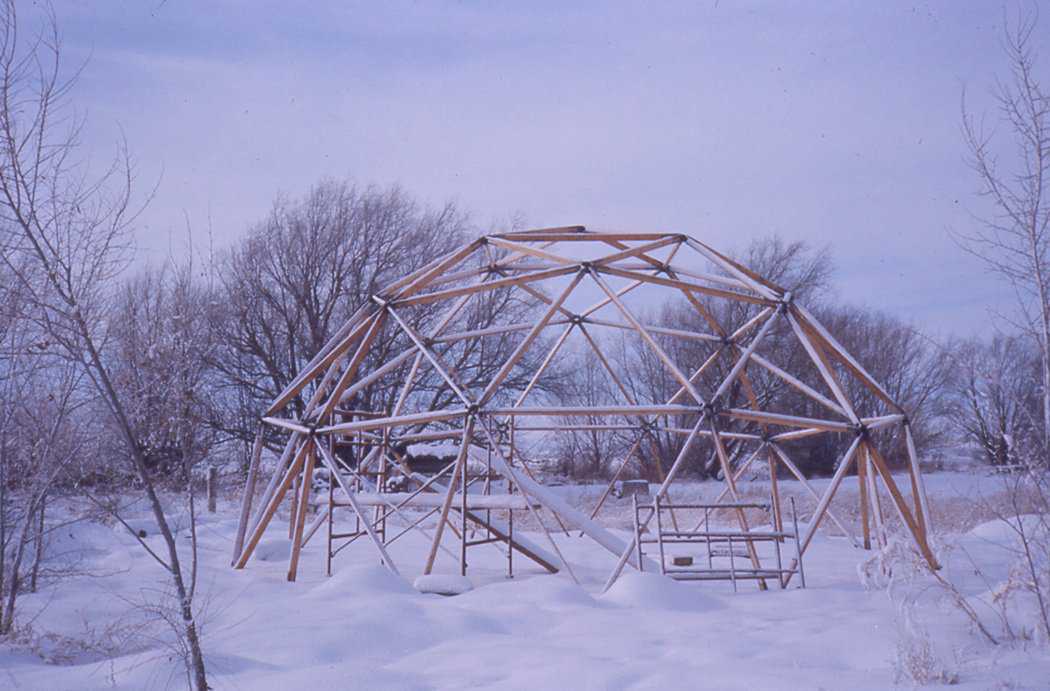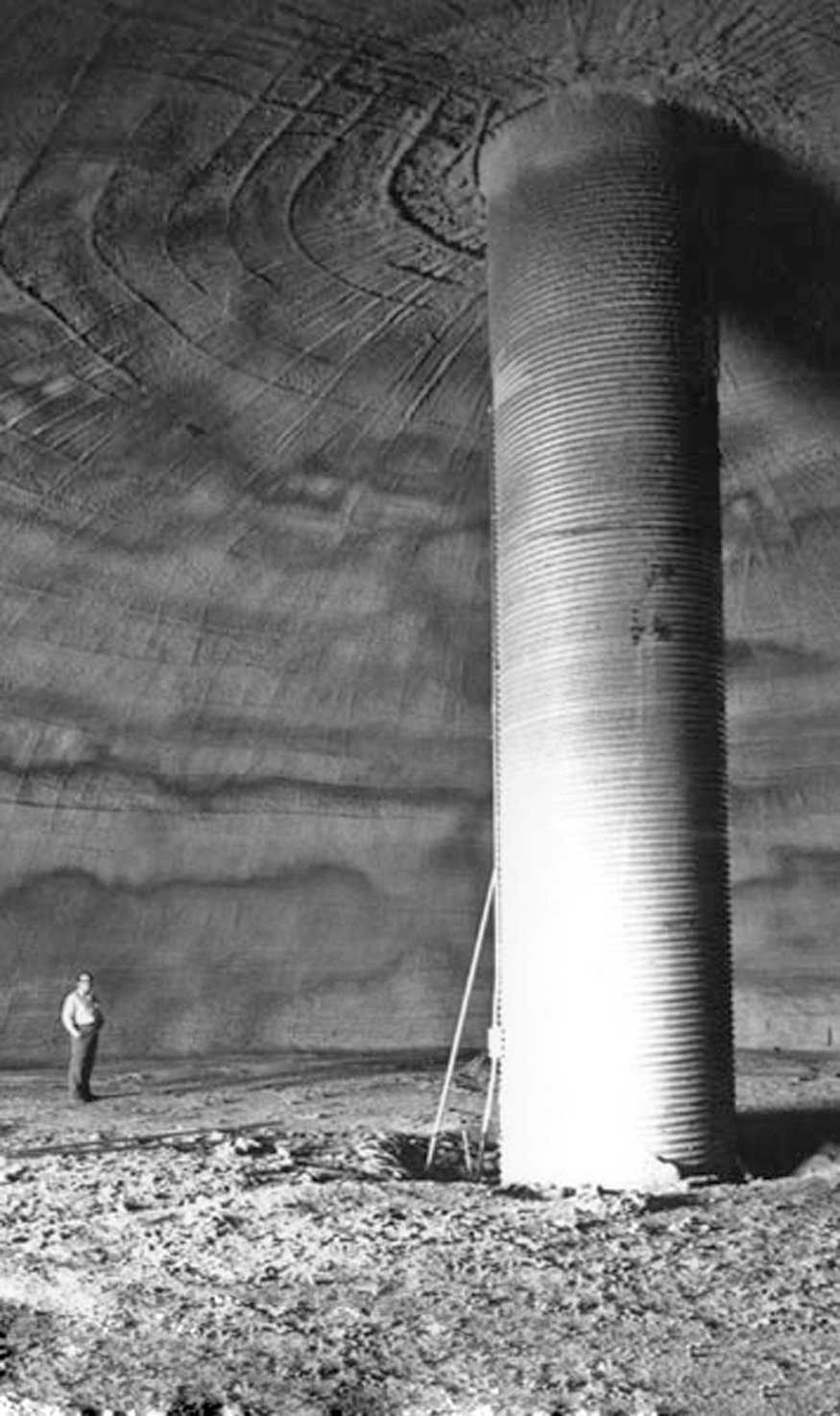Inspiration
While attending high school in Idaho back in the late 1950s, I listened to a lecture given by Buckminster Fuller. He was promoting his Geodesic Dome. I was instantly fascinated with the concept of a building which, because of its shape, would cover more area with less materials than any other structure. For many years I worked on Geodesic Domes, but I found they wasted too much material and could not be built big enough for what I wanted. I didn’t foresee just building domes; I envisioned building huge domes.
The Geodesic Dome was the basis of inspiration for the Monolithic Dome. By utilizing the dome concept, incorporating my knowledge of polyurethane foam and concrete and doing a lot of research on the subject, the details of what is now the Monolithic Dome slowly came to me. The Monolithic method proved much more efficient and less wasteful, and I knew these domes could be built BIG.
A Closer Look at the Geodesic
One of the most commonly asked questions of visitors to the Monolithic Dome Institute is, “What’s the difference between a Geodesic and a Monolithic Dome?”
A Geodesic Dome is made of a myriad of pieces, joined so they form a segmented dome. The simplest of these is the Icosohedron which is a geometric shape made of twenty identical sides and angles, like a soccer ball. In reality, the Geodesic derives its strength from struts and hubs. This strut-and-hub construction has some useful purposes, but none more so than to build Geodesic Domes.
If any of the struts is broken, a Geodesic Dome has a tendency to want to collapse and will leak. Geodesics generally are built using standard building materials, such as wood and are susceptible to termites and rot; they require continued maintenance. They are not as energy-efficient as a Monolithic Dome nor will they weather storms, earthquakes, or fire as well.
Compared to a Monolithic Dome
Monolithic Domes are permanent structures that are energy-efficient, cost-effective, disaster-resistant and attractive. They have real strength. They can withstand the force of a tornado, hurricane or earthquake. They cannot burn, rot or be eaten by bugs. They are energy-efficient — saving up to fifty percent or more on heating and cooling costs compared to a same-size, similarly outfitted conventional building.
The term Monolithic means one piece, which is indicative of Monolithic buildings, specifically the Monolithic Dome. The completed structure is literally one piece. Structural materials, such as foam and concrete, are applied in such a manner that they act as a single component. In general, a Monolithic structure is built using an Airform. Monolithic Domes and structures built using the Monolithic method generally take the shape of a figure that can be inflated. For instance, we can inflate a pipe, we can inflate a dome, but we have a terrible time trying to inflate a flat wall.
A Monolithic Dome is a thin shell concrete structure. Thin shell is defined as a structure that is made using single or compound curves from a variety of materials, including but not limited to metal, wood, concrete, brick, etc. These structures form a curve and from that shape derive most of their strength. The World War II Quonset Hut is a type of thin shell. Hyperbolic roofs, elliptical roofs and barrel vault roofs are varied types of thin shells.
Both are strong, but…
Both the Geodesic and the Monolithic Dome are generally stronger than conventional buildings, but Monolithic Domes are stronger still— and will last longer.
April 15, 2004
ud04282014


